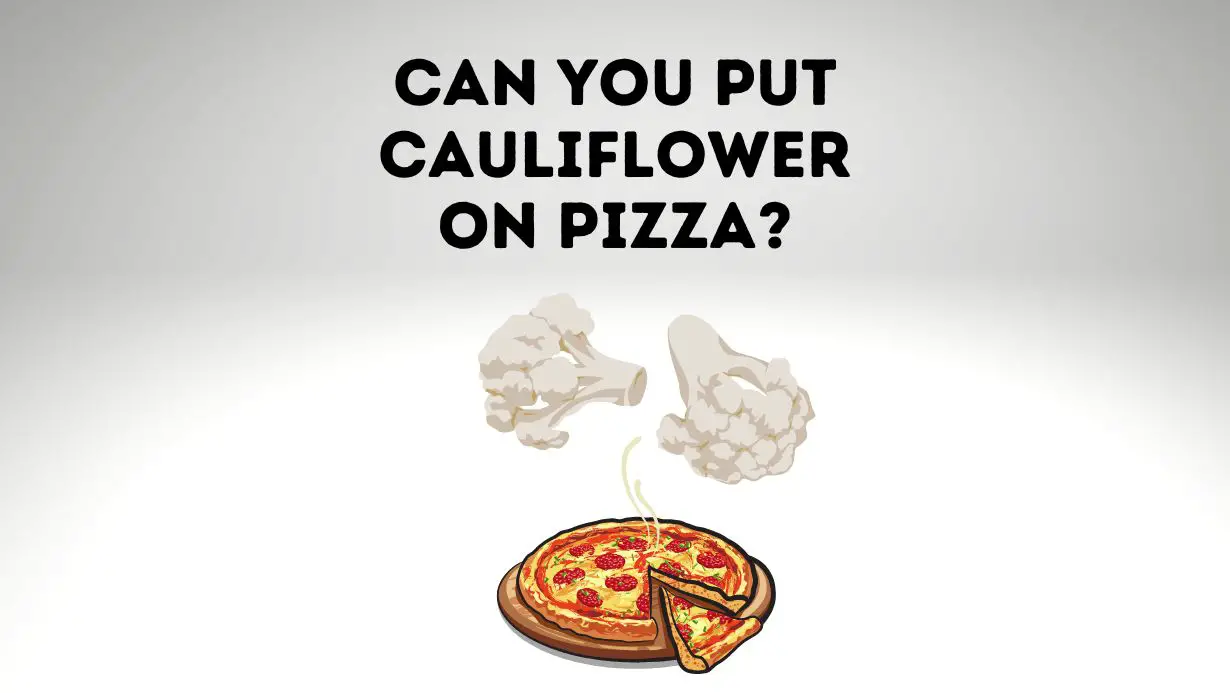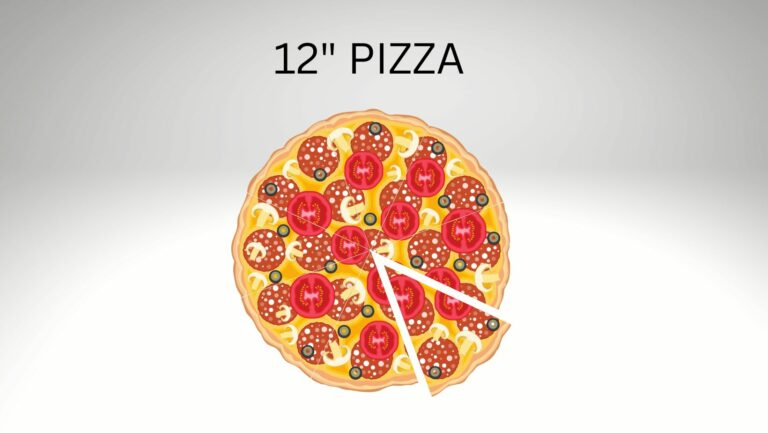
We hear the question all the time: “Can you put cauliflower on pizza?” Well, the short answer is yes, you can. But, it’s not as simple as just slapping some cauliflower on a pizza and calling it a day. In this blog post, we’re going to explore what goes into making a successful cauliflower pizza and how you can use this vegetable to make an amazing pizza. We’ll also talk about why so many people are turning to cauliflower pizzas in general and how they can be healthier than traditional pizzas.
The History Of Cauliflower Pizza
Cauliflower has been used as a food source for centuries. The first recorded use of cauliflower dates back to the 6th century BC, when it was mentioned by the Greek philosopher Pythagoras. The Roman naturalist Pliny the Elder also wrote about cauliflower in the 1st century AD.
Cauliflower was brought to England in the 16th century by Flemish immigrants, and it quickly became popular among the upper class. Cauliflower was introduced to North America in the 18th century, but it didn’t become widely available until the 19th century.
Cauliflower pizza is thought to have originated in Italy in the late 20th century. The first known recipe for cauliflower pizza appeared in an Italian cookbook in 1991. Since then, cauliflower pizza has become a popular menu item at pizzerias around the world.
How To Make Cauliflower Pizza
You may be surprised to learn that you can actually put cauliflower on pizza! This veggie is a great alternative to traditional pizza crust and it’s surprisingly easy to make. Here’s how to do it:
1. Preheat your oven to 350 degrees Fahrenheit.
2. Cut a head of cauliflower into florets and pulse in a food processor until it resembles rice.
3. Spread the “rice” onto a baking sheet and roast for about 15 minutes, stirring occasionally.
4. Once the cauliflower is cooked, let it cool slightly then transfer to a bowl and stir in an egg, some shredded mozzarella cheese, and some Italian seasoning.
5. Press the mixture into a greased 9-inch pie plate or baking dish and bake for another 10 minutes.
6. Remove from the oven and add your favorite pizza toppings. Return to the oven and bake for an additional 10-15 minutes until the cheese is melted and bubbly. Slice and serve immediately!
Recipes For Cauliflower Pizza
Assuming you’re looking for recipes for cauliflower pizza specifically:
One easy way to make a cauliflower pizza is to use a premade crust. simply top the crust with your favorite sauce and veggies. If you want a bit more of a challenge, you can make your own crust using this recipe:
1 head of cauliflower, grated
1 egg, beaten
1/4 cup mozzarella cheese, shredded
1/4 cup Parmesan cheese, shredded
1 teaspoon Italian seasoning
Garlic salt and pepper to taste
Preheat oven to 400 degrees F (200 degrees C). Line a baking sheet with parchment paper.
In a bowl, mix together grated cauliflower, egg, mozzarella cheese, Parmesan cheese, and Italian seasoning. Season with garlic salt and pepper. Mix well.
Press mixture onto the prepared baking sheet. Bake for 15 minutes. Remove from oven and top with your favorite sauce and toppings. Bake for an additional 10-15 minutes, or until crust is golden brown.
The Pros And Cons Of Eating Cauliflower Pizza
Cauliflower pizza has been gaining popularity lately as a healthier alternative to traditional pizza. But is it really healthier? Let’s take a look at the pros and cons of eating cauliflower pizza.
PROS:
1. Cauliflower is a nutrient-rich vegetable. It’s an excellent source of vitamins C and K, and a good source of folate and fibre. Adding cauliflower to your pizza means you’re getting more nutrients than you would from a traditional cheese or pepperoni pizza.
2. Cauliflower is low in calories and carbs. A whole head of cauliflower contains only about 150 calories, while a slice of cheese pizza can have upwards of 300 calories. If you’re watching your weight or trying to eat low-carb, cauliflower pizza is a better option.
3. Cauliflower Pizza is easy to make gluten-free. If you’re gluten-free or know someone who is, cauliflower pizza crust is a great option. Just be sure to check the ingredients list on the crust mix or recipe to make sure it doesn’t contain wheat flour or other glutenous ingredients.
CONS:
1. Cauliflower pizzas can be watery. Because cauliflower is mostly water, it can make for a soggy crust if not cooked properly. Be sure to squeeze as much water out of the cooked cauliflower as possible before making your crust.
2. Some people don’t like the taste of cauliflower pizza. While many people enjoy the taste of cauliflower pizza, it’s not for everyone. If you’re not a fan of cauliflower, then you won’t like this type of pizza.
3. Cauliflower pizzas can be more expensive than traditional pizzas. Because cauliflower is pricier than other vegetables, cauliflower pizzas can be more expensive to make than traditional pizzas.
Does Cauliflower Taste Good On Pizza?
If you’re looking for a low-carb alternative to traditional pizza, cauliflower pizza is a great option. But does it actually taste good?
Cauliflower pizza crusts are made by pulsing raw cauliflower in a food processor until it resembles rice. Then, the cauliflower is cooked and combined with eggs and cheese to form a dough. Once baked, the crust can be topped with any of your favorite pizza toppings.
So, does cauliflower taste good on pizza? The answer is yes! Cauliflower pizza crusts are crispy and delicious, and they make a great base for all your favorite toppings. Plus, they’re packed with nutrients like vitamins C and K, making them a healthy option for pizza night.
What Vegetables Do You Put On Pizza?
If you’re looking for a low-carbohydrate option for pizza night, cauliflower crust pizza is a good choice. Cauliflower crusts are made with shredded or riced cauliflower, eggs, cheese, and spices. The cauliflower is combined with the other ingredients and formed into a thin crust, which is then baked.
Toppings for cauliflower crust pizza can be anything you like. If you’re sticking to a low-carb diet, choose vegetables that are lower in carbohydrates like broccoli, spinach, or mushrooms. Or, go for a classic combination like pepperoni and cheese. Whatever toppings you choose, your cauliflower crust pizza will be delicious.
Do Veggies Need To Be Cooked Before Putting On A Pizza?
When it comes to pizza, there are a lot of topping options. Veggies are a popular option because they add nutrients and fiber to your diet. But do they need to be cooked before putting them on pizza?
The answer is: it depends. Some veggies, like mushrooms and onions, can be cooked directly on the pizza. Others, like peppers and tomatoes, don’t need to be cooked at all. And then there are veggies, like broccoli and cauliflower, that taste best when they’re slightly cooked before being added to the pizza.
If you’re unsure about whether or not a veggie needs to be cooked before being added to your pizza, err on the side of caution and give it a quick cook in the microwave or on the stovetop. That way, you’ll avoid ending up with a soggy or undercooked topping.
What’s The Point Of Cauliflower Pizza?
Assuming you’re referring to the cauliflower crust that’s been trendy for a few years now, there are a few reasons people might choose to make or eat cauliflower pizza.
For one, it’s a lower carb option for people who are trying to watch their intake of refined carbs or follow a low-carbohydrate diet. One average slice of cheese pizza has about 20 grams of carbs, while one slice of cauliflower pizza has only about 7 grams of carbs.
Cauliflower is also a good source of vitamins and nutrients, including vitamin C, vitamin K, and fiber. It’s possible that by swapping out the traditional wheat flour crust for a cauliflower crust, you could be getting more vitamins and nutrients in your diet.
Finally, some people simply prefer the taste or texture of cauliflower crust over wheat flour crust. Cauliflower can have a slightly nutty flavor that some find to be tastier than wheat flour. And since it’s not as dense as wheat flour crust, some people find it to be lighter and easier to digest.
Conclusion
For those looking to add some extra nutrition and flavor to their pizza, adding cauliflower is an excellent option. It adds texture, volume, and a subtle nutty sweetness that can really help elevate your pizzas. Plus, it’s low-carb and high in vitamins like vitamin C and K. Whether you’re looking for something new or are trying to get more veggies into your diet, using cauliflower as a pizza topping is definitely worth considering!

Handsomepizza.com is the brainchild of two pizza-obsessed friends who wanted to share their love of pizza. We are dedicated to bringing you the latest news, reviews, and insights on pizza.







